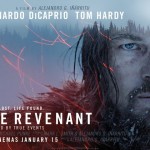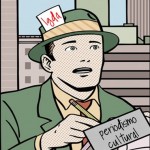Películas de interés cultural en Estados Unidos
Todos los años la Biblioteca del Congreso de Estados Unidos publica una lista de 25 películas que pasan a formar parte del Archivo Nacional del país con el fin de preservar su creatividad cinematográfica para las futuras generaciones; son películas seleccionadas por el extraordinario valor cultural, estético e histórico que aportan a la cultura estadounidense. Se trata de una iniciativa encomiable, ya que ofrece un reconocimiento y una protección especial a filmes que son ya patrimonio de todos.
A esta lista, compuesta por 550 películas, se han unido en 2010 títulos como El Exorcista, The Bargain, Todos los hombres del Presidente, Star Wars V: El Imperio Contraataca, Aterriza como puedas, Fiebre del Sábado Noche, La Pantera Rosa, Malcom X o Electronic Labyrinth: THX 1138 4EB (un cortometraje de George Lucas).
La Biblioteca del Congreso, fundada en 1800, es la institución cultural federal más antigua de Estados Unidos, y una ventana al conocimiento y la creatividad estadounidenses en múltiples disciplinas artísticas.
Les dejo con la lista completa de películas que son a partir de ahora un bien de interés cultural de Estados Unidos.
Films Selected to the 2010 National Film Registry
1. Airplane (1980)
2. All the President’s Men (1976)
3. The Bargain (1914)
4. Cry of Jazz (1959)
5. Electronic Labyrinth: THX 1138 4EB (1967)
6. The Empire Strikes Back (1980)
7. The Exorcist (1973)
8. The Front Page (1931)
9. Grey Gardens (1976)
10. I Am Joaquin (1969)
11. It’s a Gift (1934)
12. Let There Be Light (1946)
13. Lonesome (1928)
14. Make Way For Tomorrow (1937)
15. Malcolm X (1992)
16. McCabe and Mrs. Miller (1971)
17. Newark Athlete (1891)
18. Our Lady of the Sphere (1969)
19. The Pink Panther (1964)
20. Preservation of the Sign Language (1913)
21. Saturday Night Fever (1977)
22. Study of a River (1996)
23. Tarantella (1940)
24. A Tree Grows in Brooklyn (1945)
25. A Trip Down Market Street (1906)
2010 National Film Registry
Airplane! (1980)
«Airplane!» emerged in 1980 as a sharply perceptive parody of the big-budget disaster films that dominated Hollywood during the 1970s. Characterized by a freewheeling style reminiscent of comedies of the 1920s, «Airplane!» introduced a much-needed deflating assessment of the tendency of theatrical film producers to push successful formulaic movie conventions beyond the point of logic. One of the film’s most noteworthy achievements was to cast actors best known for careers in melodrama productions, e.g., Leslie Nielsen, and provide them with opportunities to showcase their comic talents.
All the President’s Men (1976)
Based on the memoir by Washington Post reporters Bob Woodward and Carl Bernstein about political dirty tricks in the nation’s capital, «All the President’s Men» is a rare example of a best-selling book that was transformed into a hit theatrical film and a cultural phenomenon in its own right.
The Bargain (1914)
After beginning his career on the stage (where he originated the role of Messala in «Ben-Hur» in 1899), William S. Hart found his greatest fame as the silent screen’s most popular cowboy. His 1914 «The Bargain,» directed by Reginald Barker, was Hart’s first film and made him a star. The second Hart Western to be named to the National Film Registry, the film was selected because of Hart’s charisma, the film’s authenticity and realistic portrayal of the Western genre and the star’s good/bad man role as an outlaw attempting to go straight.
Cry of Jazz (1959)
«Cry of Jazz» is a 34-minute, black-and-white short subject that is now recognized as an early and influential example of African-American independent filmmaking. Director Ed Bland, with the help of more than 60 volunteer crew members, intercuts scenes of life in Chicago’s black neighborhoods with interviews of interracial artists and intellectuals. «Cry of Jazz» argues that black life in America shares a structural identity with jazz music. With performance clips by the jazz composer, bandleader and pianist Sun Ra and his Arkestra, the film demonstrates the unifying tension between rehearsed and improvised jazz. «Cry of Jazz» is a historic and fascinating film that comments on racism and the appropriation of jazz by those who fail to understand its artistic and cultural origins.
Electronic Labyrinth: THX 1138 4EB (1967)
This 15-minute film, produced by George Lucas while a student at the University of Southern California, won the 1968 United States National Student Film Festival drama award and inspired Warner Bros. studio to sign Lucas to produce the expanded feature length «THX 1138» under the tutelage of Francis Ford Coppola. This film has evoked comparisons to George Orwell’s «1984» and impressed audiences with its technical inventiveness and cautionary view of a future filled with security cameras and omnipresent scrutiny.
The Empire Strikes Back (1980)
The much anticipated continuation of the «Star Wars» saga, Irvin Kershner’s 1980 sequel sustained the action-adventure and storytelling success of its predecessor and helped lay the foundation for one of the most commercially successful film series in American cinematic history.
The Exorcist (1973)
«The Exorcist» is one of the most successful and influential horror films of all time. Its influence, both stylistically and in narrative, continues to be seen in many movies of the 21st century. The film’s success, both commercially and cinematically, provides a rare example of a popular novel being ably adapted for the big screen.
The Front Page (1931)
«The Front Page» is a historically significant early sound movie that successfully demonstrates the rapid progress achieved by Hollywood filmmakers in all creative professions after realizing the capabilities of sound technology to invent new film narratives. The film is based on one of the best screenplays of the 1930s by Ben Hecht and Charles MacArthur. It was directed by Lewis Milestone and featured great performances by Pat O’Brien, Adolphe Menjou, Mary Brian, Edward Everett Horton, Walter Catlett, Mae Clark, Slim Summerville, Matt Moore and Frank McHugh.
Grey Gardens (1976)
«Grey Gardens» is an influential cinema verité documentary by Albert and David Maysles that has provided inspiration for creative works on the stage and in film. Through its close and sometimes disturbing look at the eccentric lives of «Big Edie» and «Little Edie» Beale, two women (cousins of former First Lady Jacqueline Kennedy) living in East Hampton, N.Y., the film documents a complex and difficult mother-
daughter relationship and a vanished era of decayed gentility.
I Am Joaquin (1969)
«I Am Joaquin» is a 20-minute short film based on an epic poem published by Rodolfo «Corky» Gonzales in 1967. Gonzales’ poem weaves together the long tangled roots of his Mexican, Spanish, Indian and American parentage and a past mythology of pre-Columbian cultures. The film is important to the history and culture of Chicanos in America, spotlighting the challenges they have endured because of discrimination. Luis Valdez, often described as the father of Chicano theater, produced and directed «I Am Joaquin» as a project of Teatro Campesino (the Farmworkers Theater), which he founded in 1965 to inform, encourage and entertain Chicano farm workers. Valdez later directed the Chicano-themed «Zoot Suit» in 1981, a retelling of the early 1940s Los Angeles race riots, and «La Bamba» in 1987.
It’s a Gift (1934)
The popularity and influence of W.C. Fields continues with each succeeding generation, distinguishing him as one of the greatest American comedians of the 20th century. «It’s a Gift» has survived a perilous preservation history and is the third Fields film to be named to the National Film Registry. The film’s extended comic sequence featuring Baby LeRoy, and depicting Fields’ travails while trying to sleep on the open-air back porch of a rooming house, was adapted from one of his most successful live theatrical sketches.
Let There Be Light (1946)
Director John Huston directed three classic war documentaries for the U.S. Army Signal Corps during the period of 1943-46: «Report from the Aleutians,» «Battle of San Pietro» and «Let There Be Light.» «Let There Be Light» was blocked from public distribution by the War Department for 35 years because no effort was made during filming to disguise or mask the identities of combat veterans suffering from various forms of psychological trauma. The film provides important historical documentation of the efforts of psychiatric professionals during World War II to care for emotionally wounded veterans and prepare them to return to civilian life. «Let There Be Light» was filmed by cinematographer Stanley Cortez and its score was composed by Dimitri Tiomkin.
Lonesome (1928)
«Lonesome» is one of the few American feature films directed by the gifted Hungarian-born filmmaker and scientist Paul Fejös (1897-1963). The film has been recognized for its success as both a comic melodrama (about young lovers who become separated during the chaos of a thunderstorm at Coney Island) and for its early use of dialogue and two-color Technicolor. The film was restored by the George Eastman House and has found renewed popularity with repertory and film-festival audiences.
Make Way for Tomorrow (1937)
«Make Way for Tomorrow» is a sensitive, progressive, issue-oriented Depression-era film by director Leo McCarey. It concerns an aged and indigent married couple forced by their self-absorbed children to live separately in order to save money. The final scene, depicting the husband and wife parting company in a train station, counters the belief that late-30s Hollywood films always had happy endings. «Make Way for Tomorrow» deftly explores themes of retirement, poverty, generational dissonance and the nuances of love and regret at the end of a long married life.
Malcolm X (1992)
Director Spike Lee’s biographical film about the life of civil rights leader Malcom X was produced in the classical Hollywood style. Featuring an Oscar-nominated performance by Denzel Washington, the film exemplifies the willingness of the American film industry in the early ‘90s to support the making of mainstream films about earlier generations of social leaders.
McCabe and Mrs. Miller (1971)
«McCabe and Mrs. Miller» is an aesthetically acclaimed film that demonstrates why the Western genre, especially when reinvented by acclaimed Robert Altman, endured in the 20th century as a useful model for critically examining the realities of contemporary American culture. The film’s credits include notable cinematography by Vilmos Zsigmond and a music score by Leonard Cohen.
Newark Athlete (1891)
Produced May-June 1891, this experimental film was one of the first made in America at the Edison Laboratory in West Orange, N.J. The filmmakers were W.K.L. Dickson and William Heise, both of whom were employed as inventors and engineers in the industrial research facility owned by Thomas Edison. Heise and especially Dickson made important technical contributions during 1891-1893, leading to the invention of the world’s first successful motion picture camera—the Edison Kinetograph—and to the playback device required for viewing early peepshow films—the Edison Kinetoscope.
Our Lady of the Sphere (1969)
A leading figure in the California Bay Area independent film movement, Lawrence Jordan has crafted more than 40 experimental, animation and dramatic films. Jordan uses «found» graphics to produce his influential animated collages, noting that his goal is to create «unknown worlds and landscapes of the mind.» Inspired by «The Tibetan Book of the Dead,» «Our Lady of the Sphere» is one of Jordan’s best-known works. It is a surrealistic dream-like journey blending baroque images with Victorian-era image cut-outs, iconic space age symbols, various musical themes and noise effects, including animal sounds and buzzers.
The Pink Panther (1964)
This comic masterpiece by Blake Edwards introduced both the animated Pink Panther character in the film’s opening-and-closing credit sequences, and actor Peter Sellers in his most renowned comic role as the inept Inspector Clouseau. The influence of the great comics of the silent era on Edwards and Sellers is apparent throughout the film, which is recognized for its enduring popularity. The musical score composed by Henry Mancini is also memorable.
Preservation of the Sign Language (1913)
Presented without subtitles, «Preservation» is a two-minute film featuring George Veditz, onetime president of the National Association of the Deaf (NAD) of the United States, demonstrating in sign language the importance of defending the right of deaf people to sign as opposed to verbalizing their communication. Deafened by scarlet fever at the age of eight, Veditz was one of the first to make motion-picture recordings of American Sign Language. Taking care to sign precisely and in large gestures for the cameras, Veditz chose fiery biblical passages to give his speech emotional impact. In some of his films, Veditz used finger spelling so his gestures could be translated directly into English in venues where interpreters were present. On behalf of the NAD, Veditz made this film specifically to record sign language for posterity at a time when oralists (those who promoted lip reading and speech in lieu of sign language) were gaining momentum in the education of the hearing-impaired. The film conveys one of the ways that deaf Americans debated the issues of their language and public understanding during the era of World War I.
Saturday Night Fever (1977)
Produced long after the heyday of classic Hollywood musicals, this cinematic cultural touchstone incorporated set-piece music and dance numbers into a story of dramatic realism. With its success, «Saturday Night Fever» proved that the American movie musical could be reinvented. The film’s soundtrack, featuring hits by the Bee Gees and others, sold millions of copies and gave musical life to a movie significant for much more than just its celebration of the mid-70s disco phenomenon.
Study of a River (1996)
Experimental filmmaker Peter Hutton is best known for his thoughtful and beautifully photographed ruminations on the co-existence of urban areas and natural waterways. His most renowned films focused on the Hudson River. «Study of a River» is a meditative examination of the winter cycle of the Hudson River over a two-year period, showing its environment, ships plying its waterways, ice floes, and the interaction of nature and civilization. Some critics have described Hutton’s work as reminiscent of the 19th century artist Thomas Cole and other painters of the Hudson River School.
Tarantella (1940)
«Tarantella» is a five-minute color, avant-garde short film created by Mary Ellen Bute, a pioneer of visual music and electronic art in experimental cinema. With piano accompaniment by Edwin Gershefsky, «Tarantella» features rich reds and blues that Bute uses to signify a lighter mood, while her syncopated spirals, shards, lines and squiggles dance exuberantly to Gershefsky’s modern beat. Bute produced more than a dozen short films between the 1930s and the 1950s and once described herself as a «designer of kinetic abstractions» who sought to «bring to the eyes a combination of visual forms unfolding with the … rhythmic cadences of music.» Bute’s work influenced many other filmmakers working with abstract animation during the ‘30s and ‘40s, and with experimental electronic imagery in the ‘50s.
A Tree Grows in Brooklyn (1945)
Elia Kazan’s first feature film, based on the novel by Betty Smith, focuses on a theme that he returned to many times during his film career: the struggle of a weak or ill-prepared individual to survive against powerful forces. A timely film, «A Tree Grows in Brooklyn» was released at the end of World War II, helping to remind post-war audiences of the enduring importance of the American dream.
A Trip Down Market Street (1906)
«A Trip Down Market Street» is a 13-minute «actuality» film recorded by placing a movie camera on the front of a cable car as is proceeds down San Francisco’s Market Street. A fascinating time capsule from over a 100 years ago, the film showcases the details of daily life in a major American city, including the fashions, transportations and architecture of the era. The film was originally thought to have been made in 1905, but historian David Kiehn, who examined contemporary newspapers, weather reports and car license plates recorded in the film, later suggested that «A Trip Down Market Street» was likely filmed just a few days before the devastating earthquake on April 18, 1906.





















